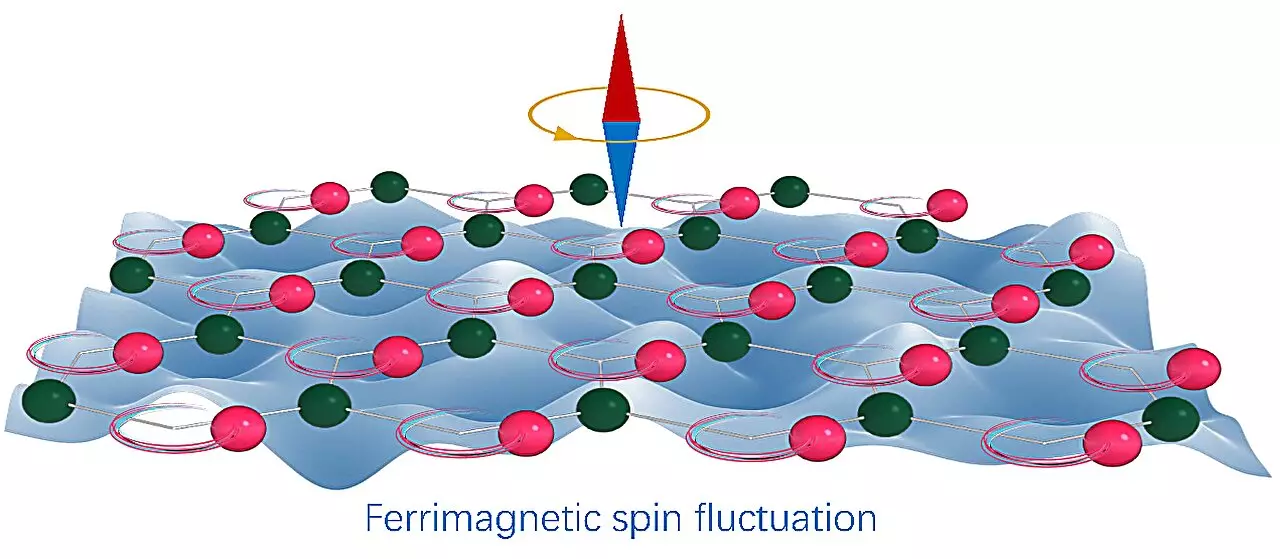Phonons, which are quasi-particles associated with sounds or lattice vibrations, have long been thought to possess negligible magnetic moments. However, a recent experiment conducted by researchers at Nanjing University and the Chinese Academy of Sciences has challenged this notion. Their study, featured in Nature Physics, has uncovered giant phonon magnetic moments in Fe2Mo3O8, a polar antiferromagnet, which are enhanced by spin fluctuations. This groundbreaking discovery sheds new light on the interplay between phonons and magnetism, opening doors for advancements in phononic control of magnetic dynamics and the development of novel spin information devices.
The researchers were inspired by recent findings of large phonon magnetic moments in non-magnetic topological systems. This inspired them to explore the magnetic properties of phonons in a spin-ordered system. Despite the expectation that the various types of spin-lattice interaction should support large phonon magnetic moments in magnetic materials, it had not been identified until now. The roles of many-body correlations and fluctuations in the formation of phonon magnetic moments were still unclear.
The key objective of the recent work by Zhang and his colleagues was to gain a better understanding of the interplay between phonons and magnetism. To achieve this, they conducted a series of experiments on the antiferromagnet Fe2Mo3O8. This choice of material was made due to its type-α multiferroic nature and its remarkably large thermal Hall coefficient, which indicates strong spin-lattice coupling. By investigating Fe2Mo3O8, the researchers aimed to establish a direct link between lattice vibrations and various magnetic processes, offering new opportunities for phononic control of magnetic dynamics and the development of spin information devices based on phonon magnetic moments.
To investigate the phononic nature of low-lying excitations in Fe2Mo3O8, the researchers utilized two key techniques: magneto-Raman spectroscopy and inelastic neutron scattering. These techniques allowed them to uncover the phonon magnetic moments of specific modes using the phonon Zeeman effect. By measuring the slope of the phonon frequency shift in polarization-resolved Raman spectroscopy under magnetic fields, the researchers were able to quantify the phonon magnetic moments. Notably, they discovered an unusual enhancement of phonon magnetic moments near the boundaries between the antiferromagnetic and paramagnetic phases.
This recent experimental study involved a joint research effort between Prof. Yuan Wan’s team at the Chinese Academy of Sciences and Prof. Jinsheng Wen’s lab at Nanjing University. Prof. Wan’s group performed a symmetry analysis to outline a minimal model capturing the essential physics underlying the experiment, while Prof. Wen synthesized the sample and conducted neutron measurements. The most remarkable finding of this study was the 600% enhancement of phonon magnetic moments near the magnetic transition. This fluctuation enhancement has the potential to surpass the magnetic moment of an electron or a magnon mode (2 Bohr magneton) and even diverge with the magnetic susceptibility.
The sixfold enhancement of phonon magnetic moments detected in Fe2Mo3O8 paves the way for intriguing future research. The findings and the theoretical microscopic model summarizing the observations could lead to new discoveries regarding the interplay between magnetism and phonons. In particular, the researchers plan to extend their work into the non-equilibrium regime, exploring phenomena such as chiral phonons-driven magnetic dynamics and transient ferromagnetism. These future studies have the potential to uncover additional insights into the fascinating relationship between phonons and magnetism, further revolutionizing the field.


Leave a Reply